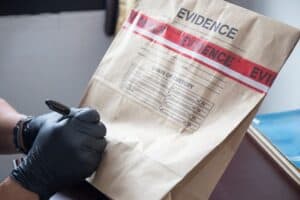One year ago, Arrow Electronics announced it was abruptly exiting the IT asset disposition business. The news sent shockwaves through the echo chamber of our ITAD industry.
The exit forced many former Arrow clients to issue Requests for Proposal. The RFP has been a time-honored tradition in the ITAD industry. Despite its merits, a traditional RFP approach does not yield optimal results for a dynamic service such as ITAD because it limits your options.
ITAD involves a diverse range of technologies, geographies, and circumstances. By limiting yourself to only one vendor, it means sacrificing savings by over-spending on logistics. It means getting shortchanged on value recovery since the vendor has ultimate control. The vendor alone sets the value for the equipment they buy from you.
Unfortunately, limiting yourself to only one vendor often means putting up with poor service until your next RFP. And then the cycle repeats.
Optimizing ITAD
Optimizing means making the best possible outcome for a given scenario. Optimizing ITAD means maximizing value recovery while minimizing freight costs, fees, environmental impact, and risk.
Request for Quote (RFQ) can be a powerful way to achieve the best financial outcome for ITAD. Anyone involved knows ITAD is not a commodity. Structuring an apples-to-apples price comparison between competing offers, however, takes effort and time. But as you will see, the payoff is worth it.
Request a quote from a dozen different service providers, and you should expect to receive a dozen completely different offers. Expertise is required to evaluate the alternatives and judge the best overall value for your organization.
Seeing so many companies struggle with an archaic RFP process after Arrow’s exit, it was impossible not to believe there had to be a better way. We decided to design a tool that would help companies find the perfect service provider and get an optimal deal by automating the RFQ bid process.
A platform was built where certified service providers could showcase their qualifications in a transparent way, and about thirty have joined. Each provider was asked to commit to a code of ethics and to eliminate deceptive pricing tactics that undermine the integrity of our industry.
The platform, ITADCentral, has been operational for almost six months now. Some surprising and powerful insights have already emerged that are worth sharing.
“Free” ITAD Is Possible
Work-from-Home requirement and distance learning demands have increased the need for old computers. The increased value of used computer equipment means it is more possible today to have a self-funded ITAD program.
The term “free” is listed in quotes because there is no free lunch. Proper ITAD is never free. By “free” we mean cost-neutral or better. Specifically, remarketing proceeds from selling equipment offset the cost of proper processing and logistics.
To date, almost 7-of-10 projects on ITADCentral have been cost-neutral or generate positive profit back to the client. Sometimes significant.
Transparent-Free Trumps Fake-Free
Everybody wants a project to be break-even or better. Of course, everybody loves free. But not all “free” computer disposal programs are the same.
It is important to remember the two basic costs: logistics and processing. Offsetting these costs is the resale of equipment, also known as a revenue share or value recovery.
Costs and recovery value must be analyzed separately. If your program is break-even or better, we refer to this as Transparent-Free. Transparent-Free requires full transparency of the cost components in addition to value recovery.
Fake-Free is the opposite and opaque. Service providers who refuse to share cost components engage in deceptive pricing tactics designed to fool the client. Should they be trusted? What are they hiding?
Transparent-Free trumps Fake-Free every day of the week. Understanding the cost as well as the returns enables you to determine you are not overpaying for services or leaving money on the table with remarketing.
Competition Keeps You On-Market
A little competition goes a long way. Instinctively we knew this, but we have been surprised at the impact.
A survey of service providers revealed that a competitive multi-vendor approach would generate 28% savings from a reduction in freight costs and fees. Moreover, competition would produce an average of 18% more back in value recovery.
From a cost perspective, transportation can be the biggest line-item expense. Logistics costs among service providers vary significantly depending on several factors. It was logical to assume the closest provider should be the best value. This assumption has proven false.
Only about 3-of-10 projects on ITADCentral get awarded to the closest provider. Distance traveled is only one component of transportation. And distance is not necessarily the biggest driver of transportation cost.
The total cost of transportation includes collecting equipment, packing, shipping, tolls, fuel surcharge, and other related logistics charges. It also depends on if a service provider owns trucks or outsources to a third-party.
The case for adding competition is even more compelling when it comes to remarketing. Naturally, service providers value equipment differently. One man’s trash is another man’s treasure.
Some providers are better at remarketing certain types of equipment than others. Some focus on refurbishment and reselling through retail channels. Remarketing bids can vary by greater than 100% between service providers for the same equipment.
So, What Does This Mean Today?
This year has brought unprecedented change. A global pandemic has transformed industries and forced many businesses into bankruptcy.
Institutions, industries, and professions we once-thought were immune to swift change were forced to adapt. 2020 is only half-over but it has already taught us that change is the new norm.
The question we should be asking today is, how can we futureproof our ITAD program? Three strategies can help your ITAD program stay safely ahead of the curve.
Strategy #1 – Go Multi-Vendor
Arrow’s exit from ITAD reinforced what we already knew; relying on only one vendor is a risky proposition. Countless issues can happen to cause a vendor to fail or let us down.
ITAD is dynamic. Once-trusted vendors become unresponsive, get into trouble, get acquired, or simply go out-of-business. It may sound cliché, but don’t put all of your eggs in one basket.
To ensure your program will be resilient, developing a vendor-agnostic multi-vendor approach. It saves money, increases remarketing revenue, supports local businesses, and futureproof your ITAD program from a sudden change impacting a particular vendor.
Adopting a multi-vendor approach does not mean you need to throw the baby out with the bathwater. A multi-vendor approach means taking control back and reducing dependency on only one vendor.
Your current ITAD vendor may be doing a fantastic job, so a multi-vendor approach may mean strategically supplementing your program with alternative ITAD vendors.
A program dependent on only one vendor is much less resilient. The reality is, you need to be prepared to switch ITAD vendors at any time. Even if you are not forced to switch, there comes a time when change might be necessary.
Strategy #2 – Competitive Regionalization
Gartner advises executives to consider two main approaches for global ITAD: sole-source supplier for all geographies, or a best-of-breed supplier by major geography.
Many organizations have followed Gartner’s advice and adopted a geo-model where the business is awarded on a regional basis. Regionalization is more cost-effective than sole-source because freight costs fall, and vehicle emissions and carbon footprint are reduced with regionalization.
Working with regional vendors, however, does not ensure optimal results if it means relying on regional monopolies. A multi-vendor approach is far more effective by introducing a little competition.
Too often, companies miss a major benefit going multi-vendor when they adopt a geo-model. Competition is necessary to truly capture the maximum benefits of a best-of-breed approach.
Strategy #3 – Measure What Matters
With the unemployment rate at record highs in most industries, the best way to keep your job is to show your employer that you are so valuable that they simply cannot live without you.
Defining success has always been difficult with ITAD. Metrics routinely tracked involve customer service response time, inventory reporting accuracy, chain-of-custody attainment, invoice accuracy, and of course, financial results. These metrics, while important, seldom demonstrate your positive impact.
If you want to be valuable to your company, then you need to help it make money and show how you improve results. Show them how your strategy generated new savings. Show them how your strategy generated superior remarketing. Show them how your strategy improved sustainability.
Any results are relative. They need to be put into proper context to be valuable. When you introduce competition, you are able to show cost savings versus the alternative.
An easy and effective comparison is cost savings versus the average of other bids. If they are qualified, we encourage you to invite your current vendor to bid as well. Inviting current vendors enables you to show savings versus the established rate in your contract, without having to negotiate. Yes, they will bid against themselves!
As with cost savings, put remarketing gains into proper context. When you rely on only one vendor, remarketing happens on a fair market value basis. FMV is the lowest price the service provider thinks you will accept before you will look elsewhere.
Adding competition enables you to show additional value recovered relative to other bids. For once, you will know the actual market price, not just a made-up FMV number.
Adding competition also enables you to show significant impact on sustainability initiatives because it will reduce the amount of ITAD miles driven and therefore your environmental footprint.
It is easy to show the amount of ITAD miles driven saved by using a service provider in closer proximity to the location of the equipment. One client, who has thousands of locations, has envisioned the possibility of saving one million ITAD miles per year by localizing pickups. Statistics like that should impress any sustainability officer.
In Closing
Your work will not speak for itself, so it is important to sing your own praises with data. To be secure your job, and with the success of your ITAD program, you want to be part of the bottom line.
By optimizing ITAD and adopting the strategies above, you produce a positive impact on your organization and demonstrate your personal ROI.
Additional Notes
Content for this article was originally published in ITAK, the abbreviation for IT Asset Knowledgebase. ITAK is the magazine of IAITAM, The International Association of Information Technology Asset Managers. IAITAM is a much-needed educational source for IT Asset Managers, CIOs, and CEOs.



